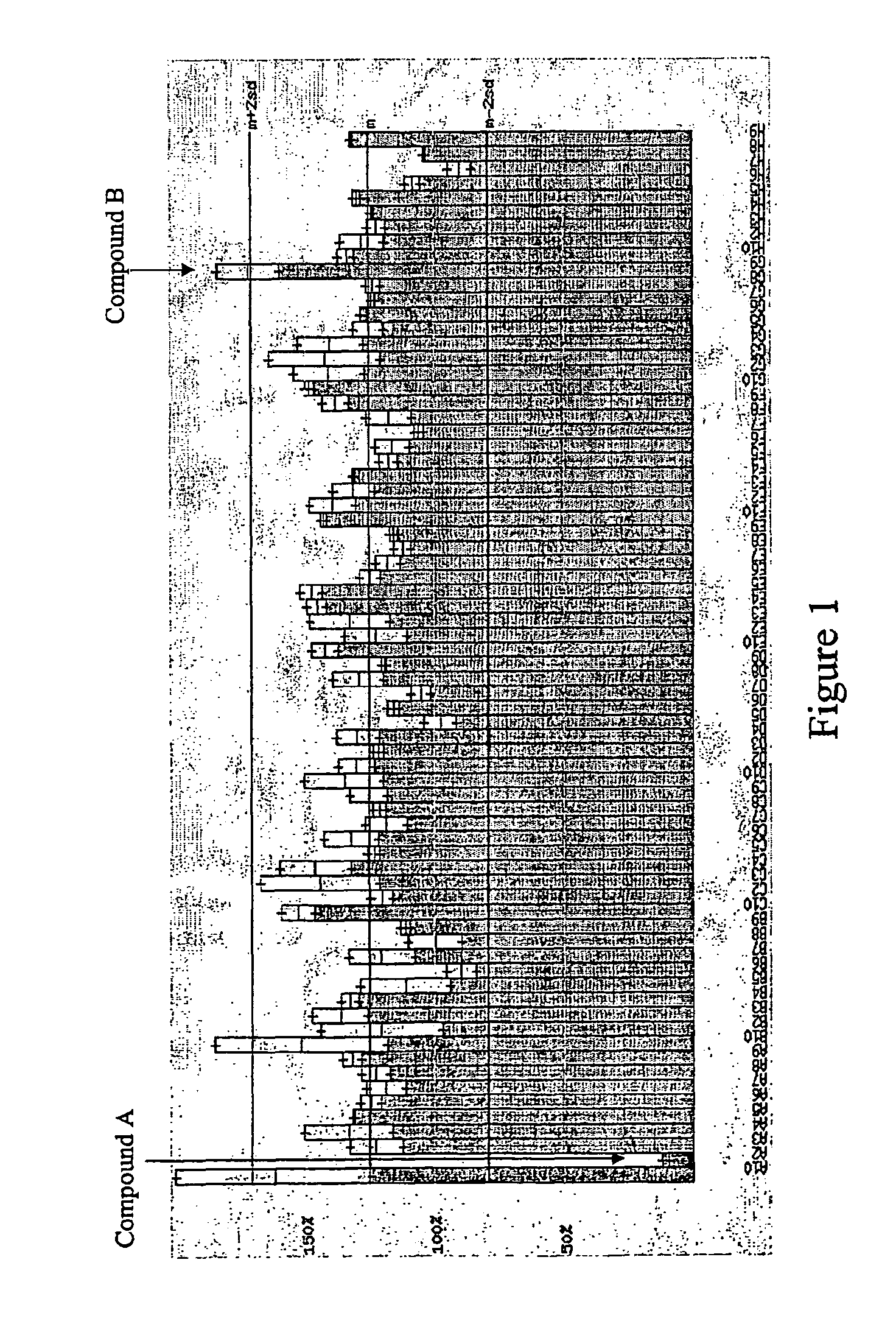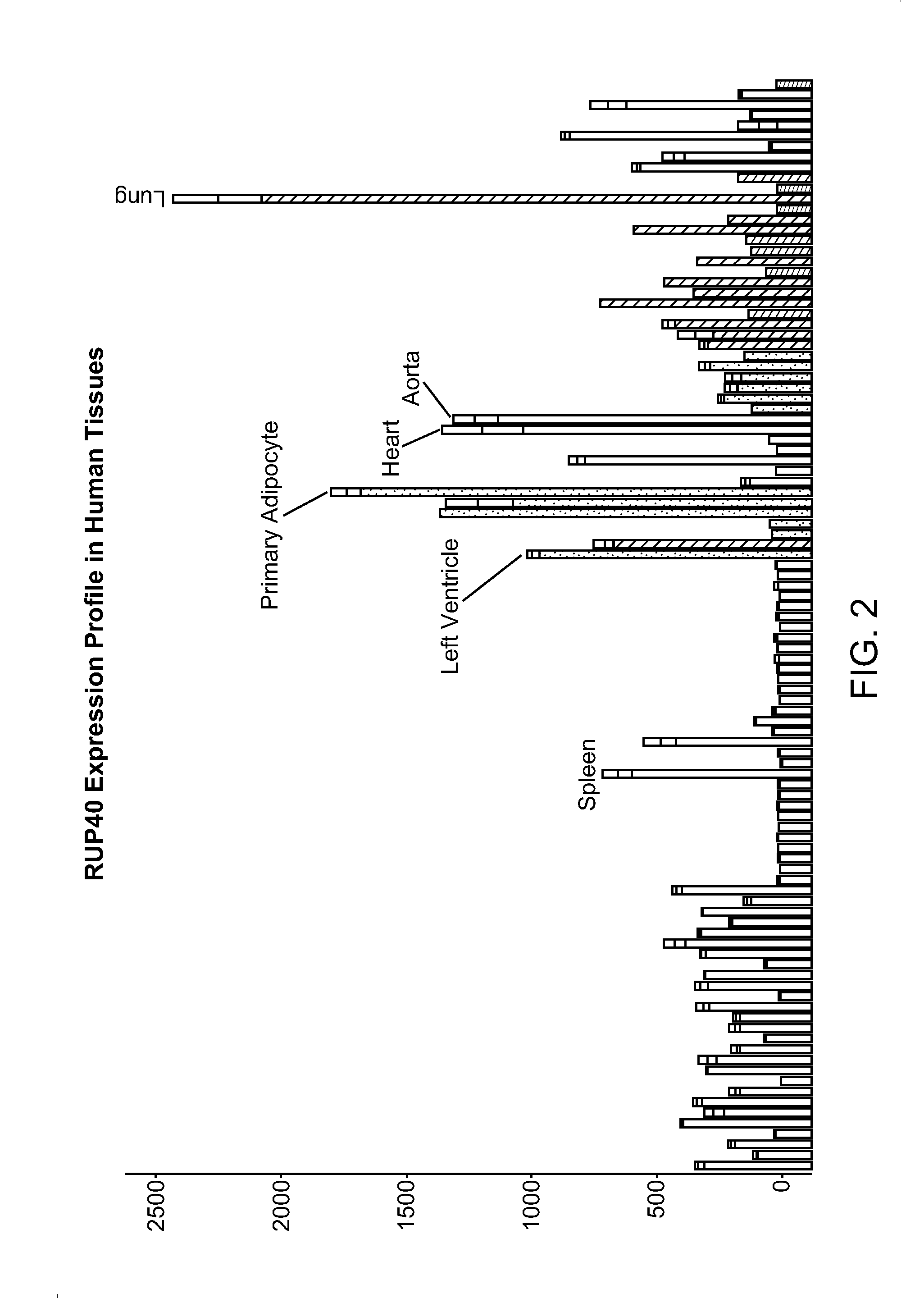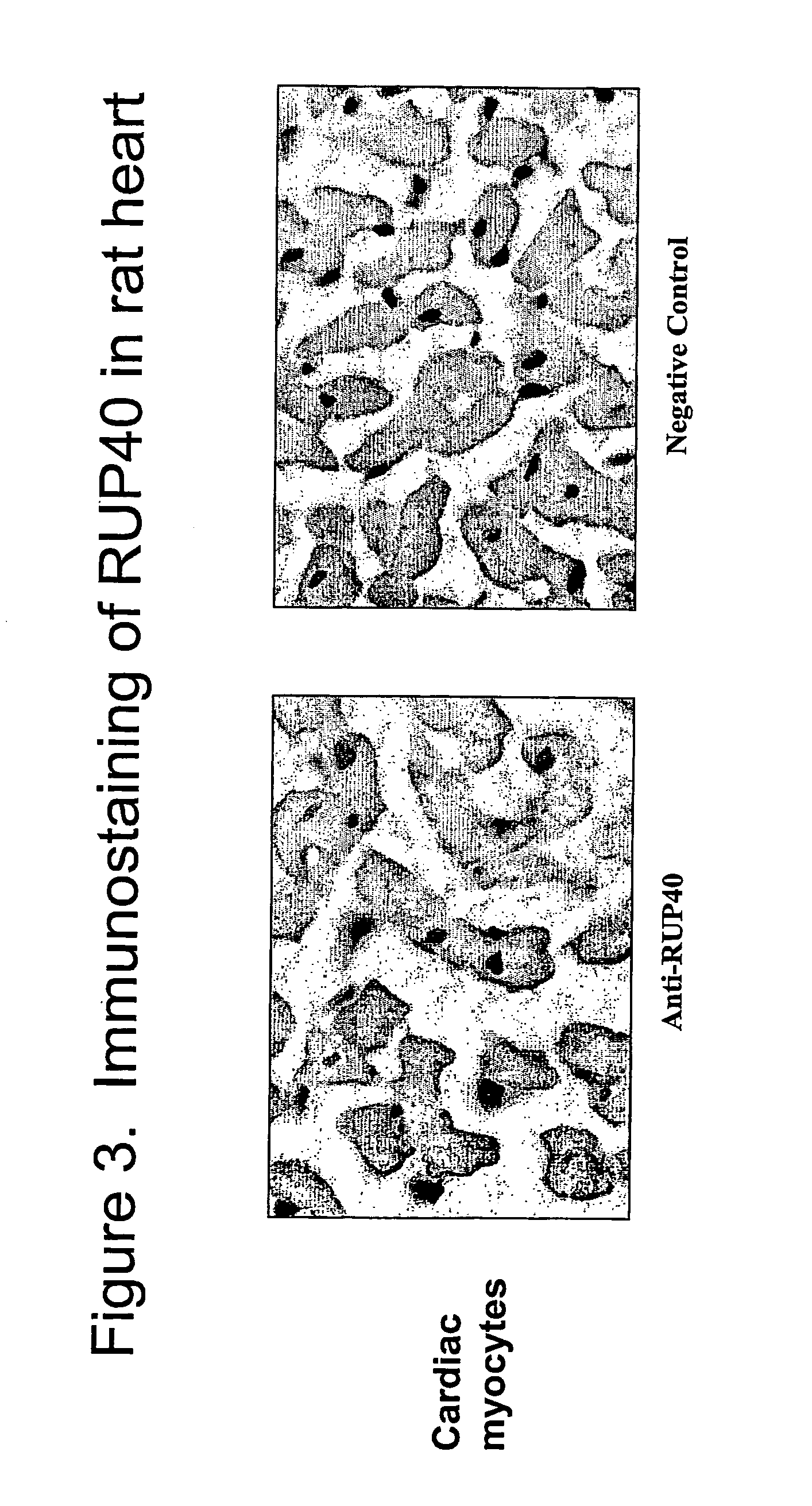Human G protein-coupled receptor and modulators thereof for the treatment of cardiovascular disorders
a human g protein and receptor technology, applied in the direction of cardiovascular disorders, drug compositions, peptides, etc., can solve the problems of cardiac dilatation and failure, decreased contractile function, etc., and achieve the effect of effectively stabilizing the receptor and promoting and stabilizing the receptor
- Summary
- Abstract
- Description
- Claims
- Application Information
AI Technical Summary
Benefits of technology
Problems solved by technology
Method used
Image
Examples
example 1
Full-Length Cloning of Endogenous Human RUP40
[0745]Polynucleotide encoding endogenous human RUP40 was cloned from Clontech Multiple Tissue cDNA Panel, catalog #K1425-1, specifically the human fetal spleen first-strand cDNA component.
[0746]The clone was generated by polymerase chain reaction using Advantage HF-2 polymerase (Clontech catalog #K1914-y) using the following gene-specific primers:
[0747]
(SEQ ID NO: 7;)5′-ATATGGTACC AAATCCCCAAGGAGAACCACTTTGTGCC-3'antisense(SEQ ID NO: 8;)5′-ATATGCGGCCGC GTTGAGCAACGAAGAAGCACTGGATGAG-3' sense.
Anti-sense primer contains underlined Kpn1 restriction site, and bold / italicized start codon. Sense primer contains underlined NotI restriction site, and bold / italicized stop codon.
[0748]Advantage HF-2 Polymerase was used for the amplification in a 500 reaction by the following cycle, with steps 2 to 3 repeated 35 times: step 1: 94.0 C for 15 seconds; step 2: 94.0 C for 15 seconds; step 3: 68.0 C for 6.0 minutes; step 4: 68.0 C for 3.0 minutes. An approx...
example 2
Receptor Expression
[0750]Although a variety of cells are available to the art for the expression of proteins, it is most preferred that mammalian cells or melanophores be utilized. The primary reason for this is predicated upon practicalities, i.e., utilization of, e.g., yeast cells for the expression of a GPCR, while possible, introduces into the protocol a non-mammalian cell which may not (indeed, in the case of yeast, does not) include the receptor-coupling, genetic-mechanism and secretary pathways that have evolved for mammalian systems—thus, results obtained in non-mammalian cells, while of potential use, are not as preferred as that obtained from mammalian cells or melanophores. Of the mammalian cells, CHO, COS-7, 293 and 293T cells are particularly preferred, although the specific mammalian cell utilized can be predicated upon the particular needs of the artisan. In some embodiments, cardiomyocytes are preferred. See infra as relates to melanophores, including Example 8.
[0751...
example 3
Assays for Assessment of GPCR Activation
[0755]A variety of approaches are available for assessment of activation of mammalian GPCRs. The following are illustrative; those of ordinary skill in the art are credited with the ability to determine those techniques that are preferentially beneficial for the needs of the artisan.
[0756]1. Membrane Binding Assays: [35S]GTPγS Assay
[0757]When a G protein-coupled receptor is in its active state, either as a result of ligand binding or constitutive activation, the receptor couples to a G protein and stimulates the release of GDP and subsequent binding of GTP to the G protein. The alpha subunit of the G protein-receptor complex acts as a GTPase and slowly hydrolyzes the GTP to GDP, at which point the receptor normally is deactivated. Activated receptors continue to exchange GDP for GTP. The non-hydrolyzable GTP analog, [35S]GTPγS, can be utilized to demonstrate enhanced binding of [35S]GTPγS to membranes expressing activated receptors. The advant...
PUM
| Property | Measurement | Unit |
|---|---|---|
| dissociation constant | aaaaa | aaaaa |
| dissociation constant | aaaaa | aaaaa |
| dissociation constant | aaaaa | aaaaa |
Abstract
Description
Claims
Application Information
 Login to View More
Login to View More - R&D
- Intellectual Property
- Life Sciences
- Materials
- Tech Scout
- Unparalleled Data Quality
- Higher Quality Content
- 60% Fewer Hallucinations
Browse by: Latest US Patents, China's latest patents, Technical Efficacy Thesaurus, Application Domain, Technology Topic, Popular Technical Reports.
© 2025 PatSnap. All rights reserved.Legal|Privacy policy|Modern Slavery Act Transparency Statement|Sitemap|About US| Contact US: help@patsnap.com



